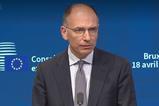The allocation to equities for Swiss pension funds has continued to rise in 2021, peaking at a record high of 33.7% on average, up from 32.7% in the previous year, the highest level in the past 10 years, according to the latest Pensionskassenstudie 2022 conducted by Swisscanto.
Allocation to bonds, by contrast, reached the lowest share in portfolios in the past 10 years at 27.4%, down from 28.9% in 2020. Allocations to real estate remained stable year-on-year at 24.6%, while alternative investments made up 6% of allocations and cash 4.6%, according to the study.
Last year, pension funds returned of average 8.4%, the second-best performance in the past 10 years. Pension funds posted returns on investment of 5.35% over the past 10 years.
In the case of pension funds with a performance above 8%, the allocation to foreign currency bonds stood at 11.3%, 2.6 percentage points higher than for those with a performance of less than 8%, the study noted.
The performance of Swiss pension funds has, however, suffered since the beginning of the year (-4.82%), mainly due to the war in Ukraine, supply chain bottlenecks and rising interest rates.
All asset classes have recorded negative returns except for alternative investments (0.8%). Investments in Swiss bonds returned -7.9%, foreign currency bonds -8.1%, Swiss equities -5.1%, foreign equities -7.2%, real estate -2.4% and cash -0.3%.
The study noted that from January to April 2022 Swiss pension funds with defensive strategies and a higher allocation to bonds suffered the most, recording almost the same amount of losses of pension funds with a high allocation to equities.
Pension funds’ funding ratios have also deteriorated due to market developments in the first quarter of the year.
Private pension funds have recorded a funding ratio of 117.3% at the end of March, down from 122.1% at the end of last year. The funding ratio of fully funded public pension funds stood at 108.4% in March, reduced from 112.9% at the end of 2021, and for the partially funded pension funds the funding ratio dropped to 87% in March from 90.8% at the end of 2021.
In 2021, 33% of pension funds had integrated ESG criteria in their investment strategies, up from 25% in 2020, primarily larger pension institutions.
Among private pension funds, 28% had integrated ESG criteria last year, up from 21% in 2020. The figures were 71% among public pension funds, up from 53% a year earlier, according to the research.
Only 6% of pension funds surveyed had set a concrete reduction target for greenhouse gas emissions, and at least 10% are considering setting reduction targets. The research also showed that 21% of surveyed pension funds measures CO2 emissions in their equity portfolios.
The study, conducted by Swisscanto, is based on data of 475 pension funds with total asset under management of CHF806bn.
The latest digital edition of IPE’s magazine is now available

















No comments yet